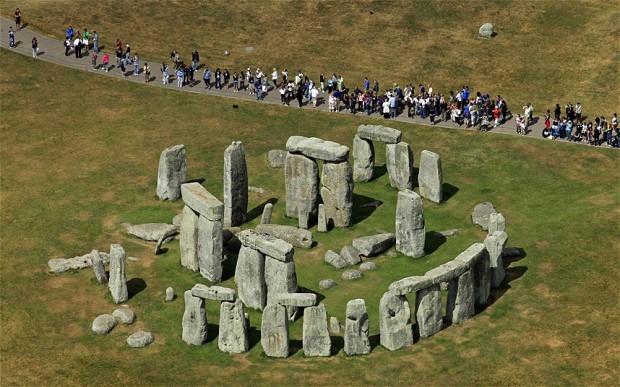
Earlier evidence had suggested that humans were present at the site, known as Vespasian's Camp, around 7,500BC but there were no signs anyone had lived there until as late as 2,500BC.
By carbon-dating materials found at the site, the archaeologists identified a semi-permanent settlement which was occupied from 7,500 to 4,700BC, with evidence that people were present during every millennium in between.
The people occupying the site would likely have been responsible for erecting the first monument at Stonehenge, the Mesolithic posts, between the 9th and 7th millennia BC.
Instead of being seen as a site which was abandoned by Mesolithic humans and occupied by Neolithic men thousands of years later, Stonehenge should be recognised as a place where one culture merged with the other, researchers said.
The findings will be broadcast in an episode of The Flying Archaeologist on BBC One on Friday evening.
Dr David Jacques of the Open University, who led the study, said he identified the settlement after deciding to search for evidence around a spring on the site, which he reasoned could have attracted animals.
"My thinking was where you find wild animals, you tend to find people," he said. "What we found was the nearest secure watering hole for animals and people, a type of all year round fresh water source. It's the nearest one to this place [Stonehenge]. I think it's pivotal."
Dr Josh Pollard of the Stonehenge Riverside Project added: "The team have found the community who put the first monument up at Stonehenge.
"The significance of David's work lies in finding substantial evidence of Mesolithic settlement in the Stonehenge landscape [which was] previously largely lacking, apart from the enigmatic posts, and being able to demonstrate that there were repeated visits to this area from the 9th to the 5th millennia BC."



Was Stonehenge a monument erected to remember the ringed island of Atlantis, as in "some things should never be forgotten"?
9th Millenium BC would line up close to when Sais said Egypt traced it's history back to.